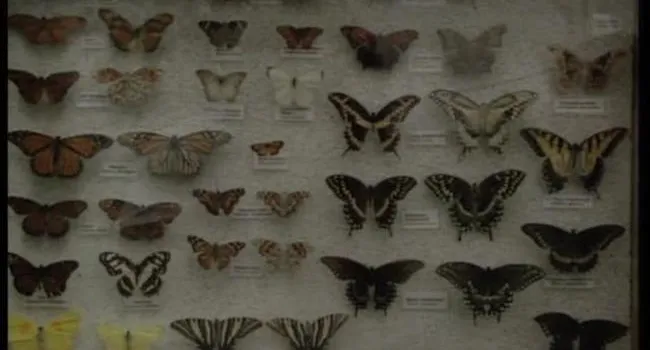There are many myths about the bat species that are simply not true. Some people think that bats are bloodsucking vampires or that they are flying, blind mice that get stuck in your hair. Project Discovery digs deeper to find out more about this amazing creature.
There are almost 1,000 different species of bats, accounting for nearly 25 percent of the mammal population. Because not all bats are cave dwellers and they can live virtually anywhere with trees, bats can be found in a variety of regions around the world.
Bats are the only mammals with powered flight, and they are excellent fliers. Some species fly around at dusk and in the middle of the night. Bats use highpitched sounds to find their way around in the darkness. They use their enormous ears to collect the vibrations from these sounds as they bounce off objects around them. This process is call echolocation.
Bats are very beneficial to the environment. Not only do bats eat mosquitoes and other insects, they also aid in the pollination of many plants that humans, eat including bananas. Bats are seed dispersers and essentially do the same job that birds do during the day.
There are many similarities in the makeup of bats and humans. Although the sizes of the parts are not in the same proportion, bats and humans share similar canine teeth, breastbones, and front limb bones. The structure of their wings is just like humans’ fingers except they have extended and elongated finger/wing bones. Bats do have some unusual characteristics, like backward feet, thumb hooks, and enormous ears. Bats’ backward feet and thumb hooks allow them to catch their prey and to hang upside down.
This program was shot at the Interactive Bat Exhibit at the SC State Museum.
Standards
- Life Science: Characteristics and Growth of Organisms
- 4.L.5 The student will demonstrate an understanding of how the structural characteristics and traits of plants and animals allow them to survive, grow, and reproduce.
- 4.L.5B Plants and animals have physical characteristics that allow them to receive information from the environment. Structural adaptations within groups of plants and animals allow them to better survive and reproduce.
- 4.L.5B.2 Construct explanations for how structural adaptations (such as the types of roots, stems, or leaves; color of flowers; or seed dispersal) allow plants to survive and reproduce.
- 4.L.5B.3 Construct explanations for how structural adaptations (such as methods for defense, locomotion, obtaining resources, or camouflage) allow animals to survive in the environment.
- 4.L.5B Plants and animals have physical characteristics that allow them to receive information from the environment. Structural adaptations within groups of plants and animals allow them to better survive and reproduce.
- 4.L.5 The student will demonstrate an understanding of how the structural characteristics and traits of plants and animals allow them to survive, grow, and reproduce.
- Life Science: Interdependent Relationships in Ecosystems
- 5.L.4 The student will demonstrate an understanding of relationships among biotic and abiotic factors within terrestrial and aquatic ecosystems.
- 5.L.4A Ecosystems are complex, interactive systems that include both the living components (biotic factors) and physical components (abiotic factors) of the environment. Ecosystems can be classified as either terrestrial (such as forests, wetlands, and...
- 5.L.4A.1 Analyze and interpret data to summarize the abiotic factors (including quantity of light and water, range of temperature, salinity, and soil composition) of different terrestrial ecosystems and aquatic ecosystems.
- 5.L.4A.2 Obtain and communicate information to describe and compare the biotic factors (including individual organisms, populations, and communities) of different terrestrial and aquatic ecosystems.
- 5.L.4B All organisms need energy to live and grow. Energy is obtained from food. The role an organism serves in an ecosystem can be described by the way in which it gets its energy. Energy is transferred within an ecosystem as organisms produce, consum...
- 5.L.4B.1 Analyze and interpret data to explain how organisms obtain their energy and classify an organisms as producers, consumers (including herbivore, carnivore, and omnivore), or decomposers (such as fungi and bacteria).
- 5.L.4B.2 Develop and use models of food chains and food webs to describe the flow of energy in an ecosystem.
- 5.L.4B.3 Construct explanations for how organisms interact with each other in an ecosystem (including predators and prey, and parasites and hosts).
- 5.L.4B.4 Construct scientific arguments to explain how limiting factors (including food, water, space, and shelter) or a newly introduced organism can affect an ecosystem.
- 5.L.4A Ecosystems are complex, interactive systems that include both the living components (biotic factors) and physical components (abiotic factors) of the environment. Ecosystems can be classified as either terrestrial (such as forests, wetlands, and...
- 5.L.4 The student will demonstrate an understanding of relationships among biotic and abiotic factors within terrestrial and aquatic ecosystems.
- Life Science: Diversity of Life – Classification and Animals
- 6.L.4 The student will demonstrate an understanding of how scientists classify organisms and how the structures, processes, behaviors, and adaptations of animals allow them to survive.
- 6.L.4A Life is the quality that differentiates living things (organisms) from nonliving objects or those that were once living. All organisms are made up of cells, need food and water, a way to dispose of waste, and an environment in which they can liv...
- 6.L.4B The Animal Kingdom includes a diversity of organisms that have many characteristics in common. Classification of animals is based on structures that function in growth, reproduction, and survival. Animals have both structural and behavioral adap...
- 6.L.4B.1 Analyze and interpret data related to the diversity of animals to support claims that all animals (vertebrates and invertebrates) share common characteristics.
- 6.L.4B.2 Obtain and communicate information to explain how the structural adaptations and processes of animals allow for defense, movement, or resource obtainment.
- 6.L.4B.3 Construct explanations of how animal responses (including hibernation, migration, grouping, and courtship) to environmental stimuli allow them to survive and reproduce.
- 6.L.4B.4 Obtain and communicate information to compare and classify innate and learned behaviors in animals.
- 6.L.4B.5 Analyze and interpret data to compare how endothermic and ectothermic animals respond to changes in environmental temperature.
- 6.L.4 The student will demonstrate an understanding of how scientists classify organisms and how the structures, processes, behaviors, and adaptations of animals allow them to survive.
Resources
You need to be logged in to listen to view this content. Create an account now; it's quick, easy, and free!
Log In to View


































